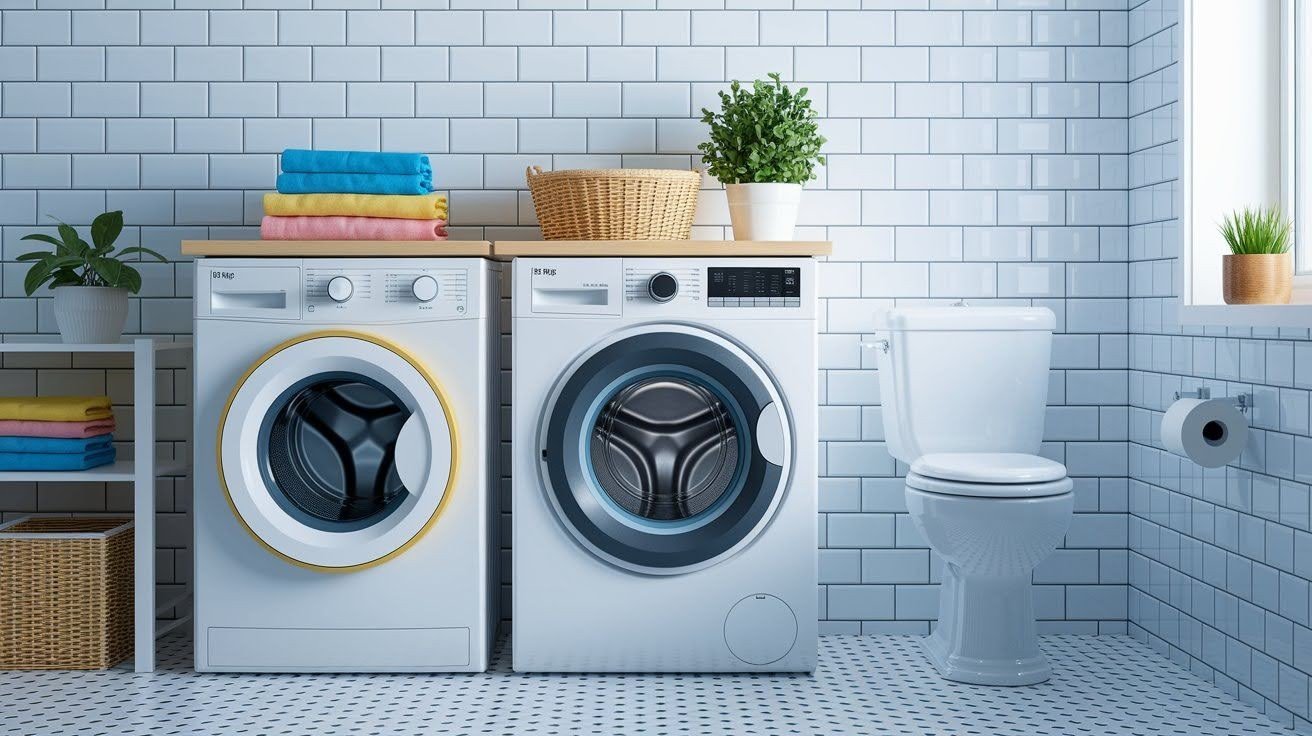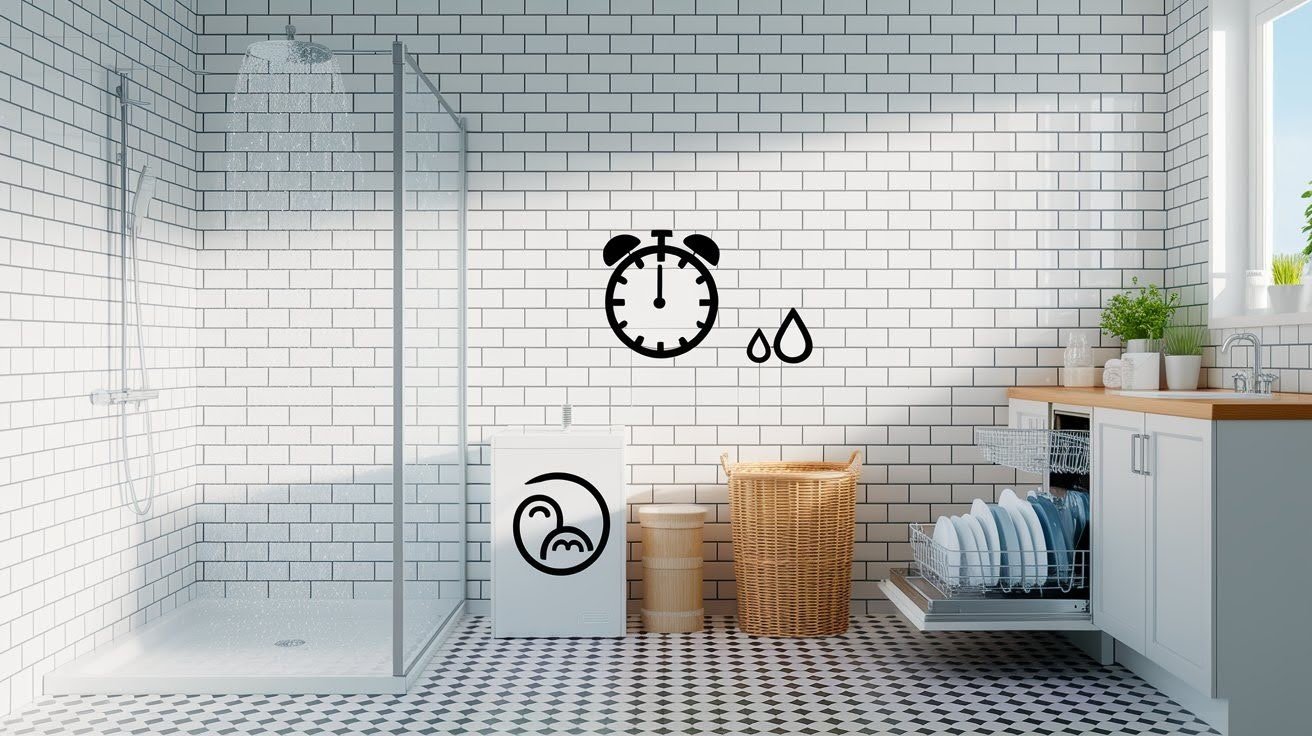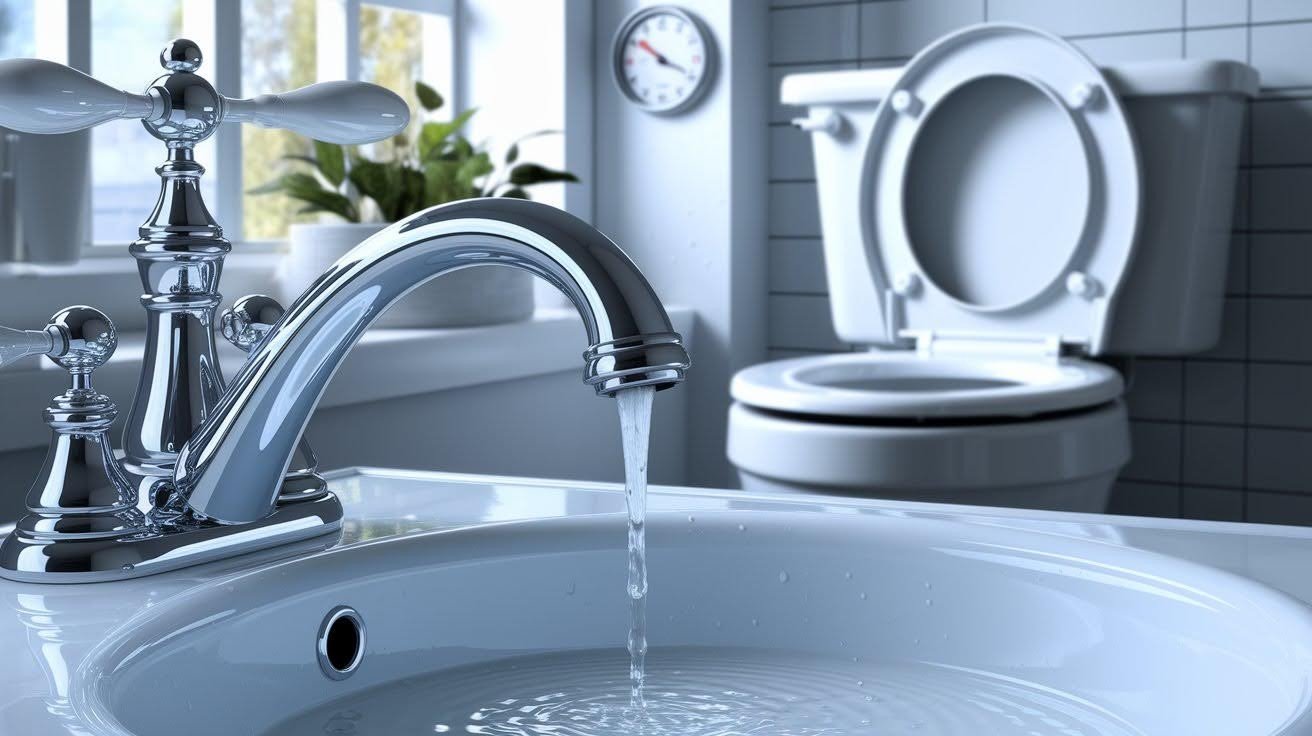Do you wonder how much water you use each month? Many people are shocked when they see their water bills. As water conservation experts report, knowing your usage helps you save money and protect our planet’s water supply.
Based on EPA data and water utility studies, this blog will show you exactly how much water a two-person home uses each month. We’ll break down daily usage patterns that water professionals track and identify the key factors affecting your bills.
You’ll learn proven methods that water efficiency specialists recommend to cut usage and lower costs. These tips come from years of research by conservation programs across the country.
Monthly Water Needs of a Household with Two People
A two-person home typically uses 4,800 to 6,000 gallons of water each month. This number comes from a simple calculation: two people using about 90 gallons per day for 30 days equals 5,400 gallons monthly.
Your actual usage might be different based on your daily habits. Some homes use less water with careful planning and efficient appliances. Others use more water for activities like lawn care or frequent laundry loads.
Many factors can change this number up or down. The age of your appliances, the length of showers, and outdoor water use all play a role in your monthly total.
Daily Water Usage Breakdown
Water usage adds up quickly throughout the day. Each person in your home uses water for different activities from morning to night.
Showers use the most water in most homes, taking 15 to 25 gallons per person each day. Long showers with older shower heads use even more water than this average.
Toilets come in second, using 15 to 20 gallons per person daily. Older toilets use much more water per flush than newer, efficient models do.
Monthly Usage For Two People
Low water users might only need 4,800 gallons per month. These households take short showers, run full loads of laundry, and fix leaks quickly. They often have newer, efficient appliances that use less water.
Average households use 5,400 to 6,000 gallons monthly. This includes normal shower times, regular laundry, and basic cleaning tasks. Most two-person homes fall into this range.
High water users need 7,000 gallons or more each month. These homes often water lawns, wash cars at home, or have pools. Frequent laundry loads and long showers also push usage higher.
What Factors Affect Monthly Water Usage?
Several things can change how much water your household uses. Some factors you can control, while others depend on your home’s setup.
Appliances And Fixtures

Old toilets can use up to 7 gallons per flush, while new, efficient models use only 1.3 gallons. Replacing old fixtures can cut your water use by thousands of gallons each month.
Washing machines also vary widely in water use. Older top-loading machines use 40 gallons per load, but efficient front-loading models use only 15 gallons per load.
Daily Habits

Shower length makes a big difference in monthly water use. Cutting shower time by just two minutes can save 150 gallons per month for each person.
How often you do laundry and wash dishes also affects your total. Running full loads uses water more efficiently than washing small loads multiple times.
Leaks And Maintenance

A running toilet can waste 200 gallons per day without you noticing. That adds up to 6,000 extra gallons per month on your bill.
Dripping faucets might seem small, but they can waste 300 gallons per month. Checking for leaks regularly helps keep your usage normal.
Outdoor Water Use

Watering your lawn uses large amounts of water quickly. A sprinkler system can use 600 gallons per hour for a typical yard.
Washing your car at home uses 80 to 140 gallons each time. Pools and hot tubs also add thousands of gallons to your monthly usage.
How To Reduce Water Usage In A Two-Person Household?
Small changes and regular checks can save water and money.
- Turn off the tap when brushing teeth or washing dishes. This simple habit saves gallons every day.
- Take shorter showers. A few minutes less can make a big difference.
- Replace old toilets, shower heads, and washing machines with efficient models. They use much less water.
- Fix leaks as soon as you notice them. Even small drips waste a lot over time.
- Check the water meter often. It helps you spot hidden leaks early.
Conclusion
According to water utility data, most two-person households use between 4,800 and 6,000 gallons each month. Water conservation studies show this range covers 70% of similar homes nationwide.
Check your water bill to compare your usage with these industry standards. Water efficiency experts recommend starting with simple changes like shorter showers and quick leak repairs.
Research from conservation programs proves that small changes lead to 15-25% savings on water bills. These methods have helped thousands of households reduce costs while protecting our water resources for future generations.
Frequently Asked Questions
How Much Water Does A Dishwasher Use Per Cycle?
Most dishwashers use between 6 and 16 gallons per cycle. Energy-efficient models generally use less water, often closer to 6 gallons, while older or standard models can use more. Running full loads helps save both water and energy.
What Is A Good Daily Water Goal For Drinking?
A common guideline is about 64 ounces (8 cups) per day, but your needs depend on climate, activity level, and health. Some experts recommend half your body weight in ounces. Staying hydrated is essential for overall health and energy.
How Can I Tell If I Have A Hidden Leak At Home?
To check for leaks, turn off all water-using appliances and note your water meter reading. After two hours without any water use, check again. If the reading changes, you likely have a hidden leak that needs attention.
Does Washing Clothes In Cold Water Save Water?
Washing in cold water doesn’t save water-it saves energy because the machine doesn’t heat the water. To reduce water usage, always run full loads and choose a high-efficiency washer, which can cut water consumption by half compared to older models.
How Much Water Does A Lawn Need Per Week?
Most lawns need about one inch of water weekly, which equals roughly 620 gallons per 1,000 square feet. Water deeply and early in the morning to reduce evaporation, and consider drought-resistant plants to minimize your outdoor water usage.






